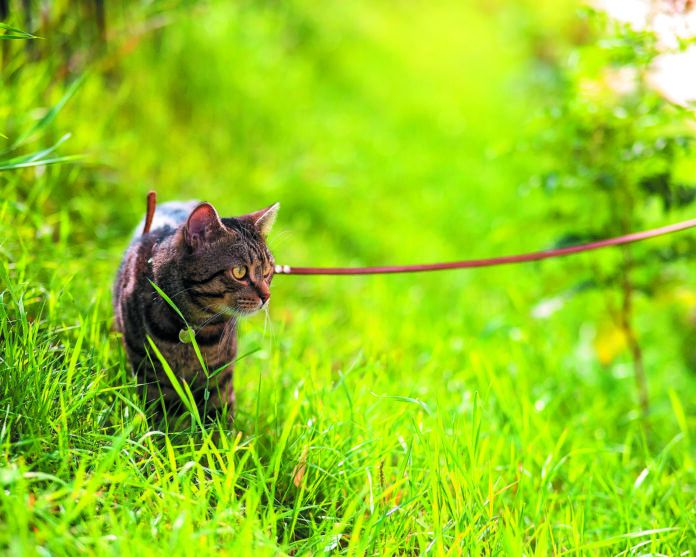We often have it drummed into us that to remain safe and live as long as possible, our cats should remain entirely indoors at all times. The American Association of Feline Practitioners (AAFP) disagrees, saying that “indoor/outdoor living for cats in an environment that is safe is the best option.” The organization concedes that keeping a cat indoors for the entire length of its life increases the odds for the pet’s longevity. But, it says, “ a lifestyle choice made with the sole intention of increasing longevity – but in an impoverished or inadequate environment – is not in the cat’s best interest.”
“The innate needs of the cat are difficult or impossible to replicate in the indoor environment,” the AAFP maintains. “There is an increased incidence of behavior problems if indoor cats are unable to express normal behaviors.”
There are increased physical problems as well. A bored cat is a stressed cat, and emotional stress increases the odds for such feline diseases as cystitis and colitis. But how can you let a cat explore the outdoors safely? There are three ways.
1. Install a catio. The catio, an outdoor enclosure for your pet, can range from a simple platform that extends outside a window ledge to an elaborate structure in the backyard with perches at different levels. A catio won’t let your pet chase and pounce on prey, but it will let her breathe fresh air and at least see and smell wildlife around her. The cat is a relatively young species, coming tens of thousands of years after the dog. It still needs to employ its senses in nature.
2. Build a fence around the perimeter of your property. You need to stay out there with your cat to make sure she remains safe from wildlife that can get into your yard. You also need to make sure the fence is tall enough. Many cats can jump as high as 6 feet — and some can jump higher.
3. Walk your cat on a leash. This is a solution that apartment dwellers as well as home owners can take advantage of. Not all cats will go for it, but it’s worth a try.
The leash has to be attached to a harness, not a neck collar, which a cat might wriggle out of and which will also offer you too little control. Your pet will have to be adjusted to the harness gradually. She’s not a dog who will come running when you shake it. Here are the steps:
A) Do not start by trying to put the harness on your cat. Leave it near her favorite resting spots so she can adjust to the sight and odor.
B) Give your cat some of her favorite treats when she’s next to the harness.
C) Don’t go straight from having the harness near her to trying to put it on. First just gently put part of it on her back one day, then on another day slip one paw through, and so on.
D) Let your cat walk around the house with the harness on.
E) Try attaching a leash to the harness and walking with your cat around the house.
F) Take your cat to the front door with the harness, and go with her lead. If she walks through the doorway, great. If she runs back into the house or stands still, that’s fine, too. This doesn’t have to happen.
G) Try it a few more times, but no more than once a day.
H) If your cat makes it outside, terrific. Start in a quiet spot, if possible.
I) Keep in mind that the aim is not to cover a certain amount of ground. Your cat may only want to go a few feet from the house, then turn back. That’s okay. How far she wants to venture from home is her call. She might be more content to examine a blade of grass for 20 minutes than to go around the block. The aim is for your pet to enjoy some fresh air, get some direct sunlight, and be a little closer to nature.




